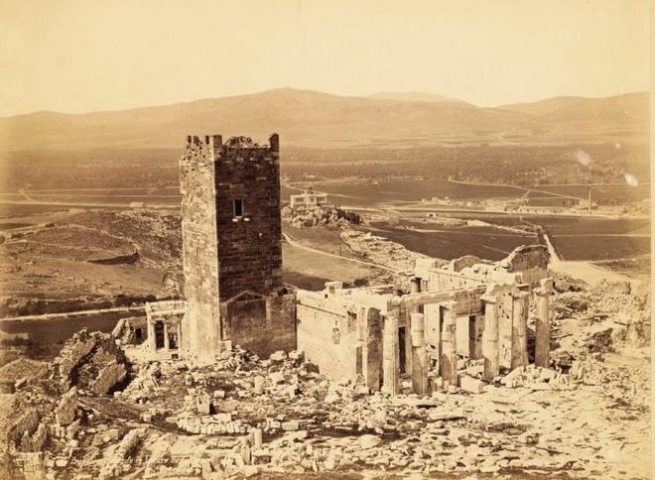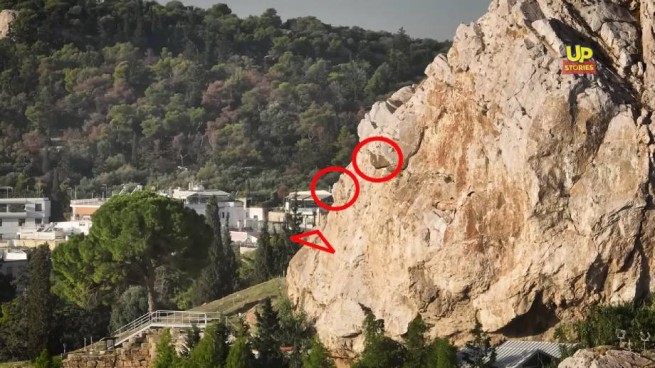Can you see the face on the rock of the Acropolis? Who can identify the profile located on the southeast side of the landmark? These are the difficult questions asked by amateur historians who love to study the foot of the Acropolis.
So the “stone portrait” or petroglyph, which appears to depict a man’s profile, with a beard and a “philosophical spirit,” is quite clearly visible on the mountain, as the group’s YouTube channel Up Stories tells us. They say that every second person not only sees outlines, but even distinguishes details – eyes, nose and mouth. And if we finally admit that there is still “a face” on the rock of the Acropolis, then it would be interesting to know who she is, this mysterious person who gives “food for thought” and various theories.
Some believe that this is Poseidon, Zeus or Pericles. Erosion of the rock has changed its face greatly over time, says the Up Stories team. It is believed that this could be Poseidon. According to mythology, the Lord of the Deep Sea lost a battle with Athena, and the city was eventually named after the goddess. Pallas Athena in ancient Greek mythology is the goddess of just war and victory, as well as wisdom, knowledge, arts and crafts.
An additional detail that strengthens the above assumption is that the face is turned towards the sea, whose god was Poseidon.
Some believe that the face does not exist at all, and that it is all just a “game of the imagination.” Others completely disagree with this, that is, those who perceive everything described in the following video as real.
This is not the first time that the Holy Rock has been “robbed of its secrets.” Another of its secrets is the “Secret Chamber of the Acropolis”, which is a Byzantine church. Renovated in 2017, this former place of worship lies deep in the foothills of Athens’ most famous mountain. Above the Theater of Dionysus is the Church of Panagia Spiliotis, or the Cave of Our Lady, which was converted from an archaic temple.
Along with the mysteries surrounding this place, the oldest surviving photograph of the Parthenon, dated 1842, is of particular value. After all, there are always things around the Acropolis that will pique our interest, such as the unknown giant – “The Tower That Is No More”!








More Stories
The Holy Fire will arrive at Athens airport at 19:00
Be careful: no one is safe from a black widow bite (video)
Study: Women live longer, but also suffer more health problems than men